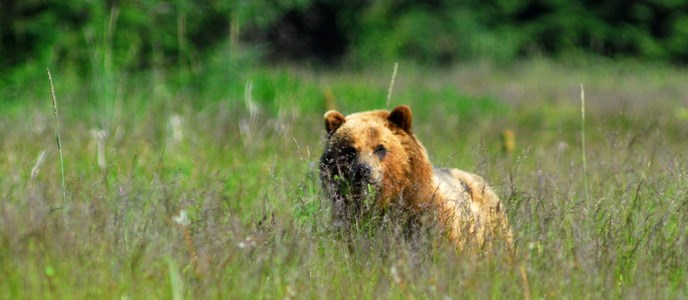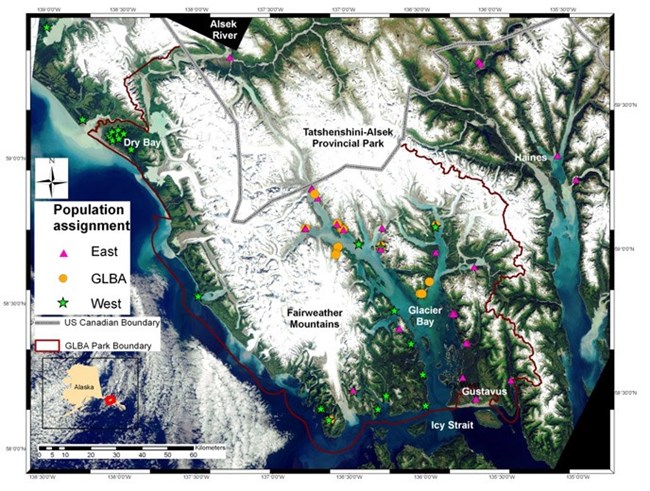
Population and landscape genetics of brown bears in Glacier Bay, Alaska 
NPS Results show that there are three genetically distinct groups of brown bears in Glacier Bay and that the rugged Fairweather mountain range and the wide fjords of Glacier Bay are both barriers to dispersal. Two genetic groups range far beyond the park boundary to the west and east, and one group was isolated long enough to undergo genetic drift and develop a genetic signature unique to northern Glacier Bay. This endemic subpopulation likely stems from an original group of colonizers from the east, while bears from the other two groups are more recent immigrants. One recently immigrated group likely moved into the bay from the northwest, the other arrived from the northeast, and represent a second wave of colonization along the shoreline of Glacier Bay. These recent immigrants are beginning to mix with the original colonizers after years of separation, and soon the unique genetic signal of the original colonizers will vanish. Lewis TM, Pyare S, Hundertmark KJ (2015) Contemporary genetic structure of brown bears (Ursus arctos) in a recently deglaciated landscape. Journal of Biogeography 42:1701-1713. doi: 10.1111/jbi.12524 |
Last updated: February 3, 2019
